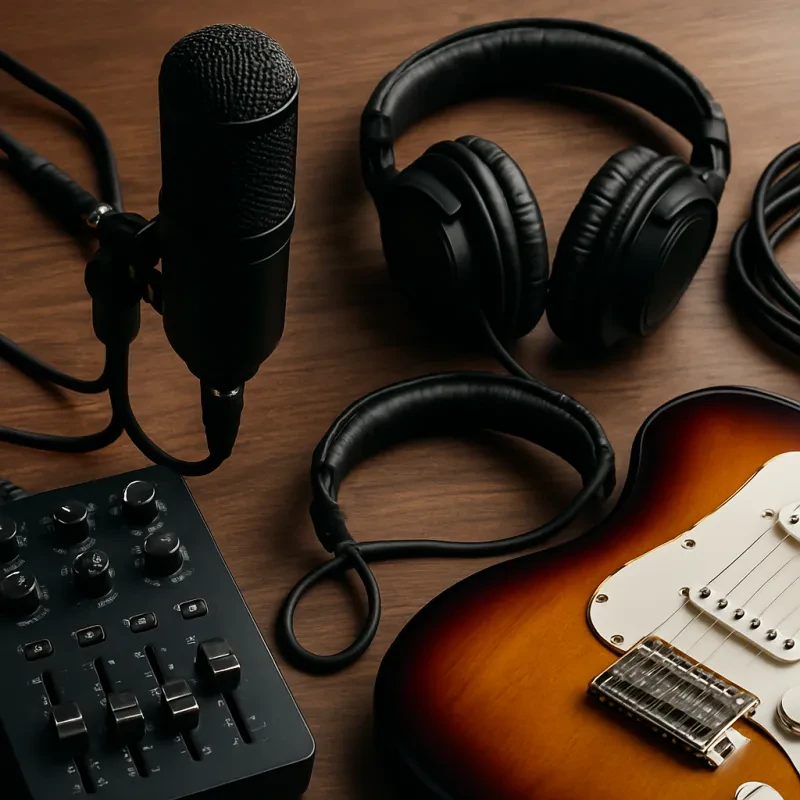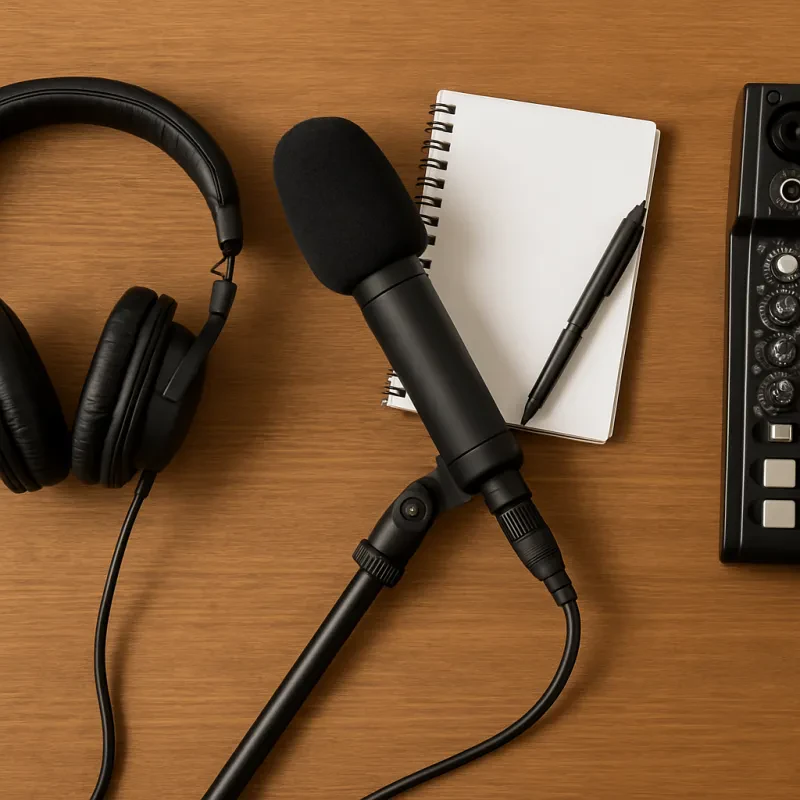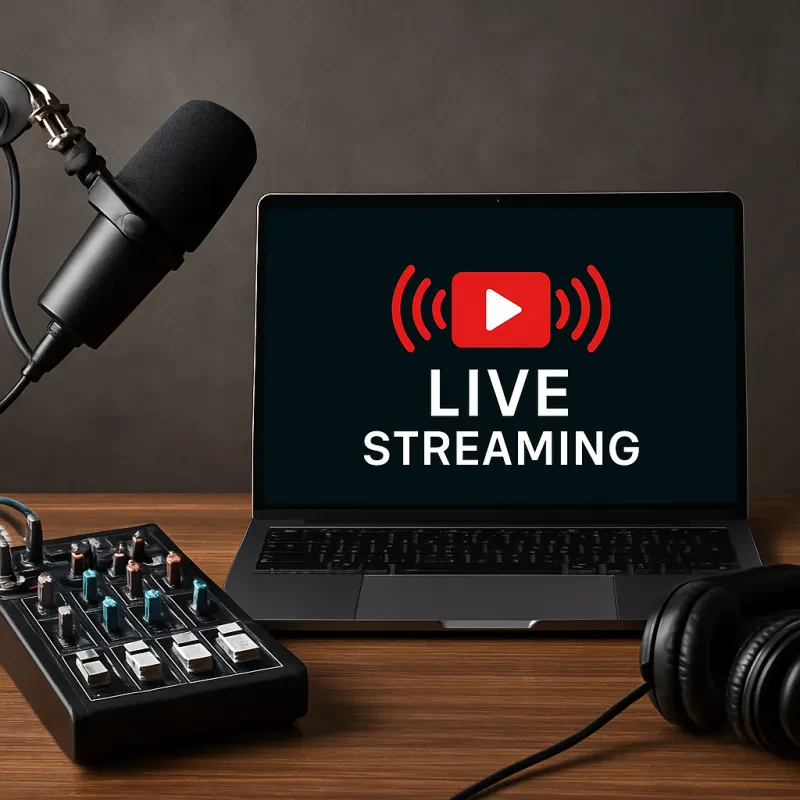If you’re serious about creating a podcast that’s enjoyable to listen to, investing in the right gear is key. It’s all about achieving stellar sound quality, and there are a few essentials that can make a big difference. Let’s break down some of the must-have items for your podcasting setup.
Microphone: Your microphone is your best friend when it comes to sound quality. Look for a dynamic or condenser microphone that offers clear audio and minimizes background noise. Popular picks include the Shure SM7B and the Audio-Technica AT2020. They’re both reliable and easy to use, making them a great choice whether you're just starting out or looking to upgrade podcast equipment.
Audio Interface: An audio interface helps connect your microphone to your computer, converting the analog sound to digital. This is crucial if you’re using a high-quality mic. Options like the Focusrite Scarlett 2i2 or the Behringer UMC22 are user-friendly and offer excellent sound fidelity without breaking the bank.
Headphones: Good headphones are essential for monitoring your sound as you record. Look for closed-back models that block out external noise, so you can focus on your audio. The Sony MDR-7506 and Audio-Technica ATH-M50x are favorites among podcasters for their comfort and clarity.
Pop Filter: This little accessory can save you from those annoying popping sounds that happen when you say words with "P" and "B." A pop filter is an affordable addition that can significantly enhance the audio quality of your recordings, ensuring your listeners hear every word clearly.
Essential Accessories You Should Consider
1. Pop Filter: This little guy helps to reduce plosive sounds—those annoying "p" and "b" sounds that can explode through your mic. A pop filter is super easy to set up and can make a big difference in how professional your audio sounds. Just clip it onto your mic stand and you’re good to go.
2. Acoustic Panels: If you're recording in a room with a lot of echoes, acoustic panels can be a game changer. They help absorb sound, making your voice clearer and reducing background noise. You don’t need to go overboard; even a few strategically placed panels can help with sound quality.
3. Microphone Isolation Shield: For those who want to minimize outside noise, a microphone isolation shield is worth the investment. It creates a small sound booth effect around your microphone, so you get clean audio every time. Plus, it's compact and portable!
4. Quality Headphones: Don’t underestimate the power of a good pair of headphones. They help you catch audio issues while recording, so you can address them on the spot. Look for closed-back headphones to prevent sound leakage into your microphone.
These accessories are essential when you think about how to upgrade podcast equipment. With a little investment in the right tools, you can make significant improvements to your sound quality and overall podcast experience.
Tips to Improve Your Recording Space
Creating a great podcast goes beyond just having the right gear; it’s also about your recording space. If you want to enhance your sound quality, it’s worth investing some time and effort into optimizing your environment. Here are some easy tips to get you started.
First, look at the room where you record. Choose a space that’s away from noise—like busy streets or loud family members. If you can, pick a smaller room with carpets, curtains, and soft furnishings. These materials help absorb sound and minimize echoes, making your recordings cleaner and more professional.
Next, consider using some DIY soundproofing solutions. You don’t need to spend a fortune! Simple things like foam panels can be placed on walls to reduce noise bounce. Even blankets or cushions can help if you're on a budget. Just hang them up or drape them over hard surfaces to soak up sound.
Finally, pay attention to your equipment setup. Make sure your microphone is positioned correctly, ideally around 6-12 inches from your mouth. A pop filter can also be a game-changer as it reduces those annoying plosive sounds. These small adjustments can make a significant difference in how to upgrade podcast equipment and achieve that polished sound you’re aiming for.
Budget-Friendly Upgrades for Every Podcaster
If you're looking to enhance your podcast sound without breaking the bank, you're in luck! There are plenty of budget-friendly upgrades that can make a big difference in your audio quality. Let’s dive into how to upgrade podcast equipment without emptying your wallet.
One of the easiest upgrades is investing in a quality microphone. While built-in computer mics can be convenient, they often don’t capture your voice as clearly as you'd like. Look for options like USB mics that won’t cost you a fortune but can dramatically improve your sound. Popular choices include the Audio-Technica ATR2100x and the Blue Snowball. Both are user-friendly and deliver solid audio quality for beginners.
Don't forget about your recording environment! Adding some sound-proofing can significantly improve your podcast's audio. Simple solutions like foam panels on your walls, thick curtains, or even recording in a closet can help reduce echoes and background noise, making your voice pop. Plus, it’s a budget-friendly way to create your own little sound booth!
Finally, consider upgrading your audio editing software. If you're using free options, there are affordable programs like Adobe Audition or Reaper that offer more features and better sound manipulation tools. These can help you refine your podcast's sound, making it more professional and enjoyable for your listeners. Investing in the right software can really be a game-changer as you learn how to upgrade podcast equipment effectively.


